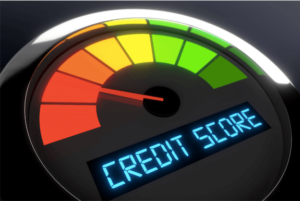The financial landscape offers a myriad of borrowing options, each designed to cater to different needs and preferences. One such common form of credit is borrowing installment loans, a versatile tool that allows individuals to finance various expenses over a predetermined period.
However, a critical distinction arises when considering whether an installment loan is secured or unsecured. In this comprehensive guide, Finger Finance demystifies the complexities surrounding installment loans, delving into their characteristics, the secured and unsecured dichotomy, and the implications for borrowers.
What Is The Definition Of Installment Loans?
At its core, an installment loan is a type of credit that provides borrowers with a lump sum amount that is repaid in fixed, regular installments over a specified period. These loans serve diverse purposes, ranging from financing a major purchase to consolidating existing debts.
What Are Common Types of Installment Loans?
Installment loans come in various forms, each tailored to specific needs. Examples include:
| Personal Installment Loans: | General purpose loans for various personal expenses. |
| Auto Loans: | Financing for the purchase of a vehicle. |
| Mortgages: | Long term loans for real estate purchases. |
| Student Loans: | Funds for educational expenses. |
| Debt Consolidation Loans: | Combining multiple debts into a single loan with structured payments. |
What Is The Secured Versus The Unsecured Distinction?
Secured Installment Loans
A secured installment loan is backed by collateral, which is an asset that the borrower pledges as security for the loan. In the event of default, the lender has the right to seize the collateral to recoup losses. Common examples include:
- Auto Loans: The vehicle serves as collateral.
- Mortgages: The property being financed is the collateral.
Unsecured Installment Loans
In contrast, an unsecured installment loan does not require collateral. Approval is typically based on the borrower’s creditworthiness, income and financial history. Examples of unsecured installment loans include:
- Personal Loans: Used for various purposes without specific collateral.
- Student Loans: Based on the borrower’s academic and financial profile.
- Debt Consolidation Loans: Typically unsecured, relying on the borrower’s creditworthiness.
An In-Depth Analysis Of Secured Installment Loans
a) Collateral Requirement
The defining characteristic of secured installment loans is the requirement for collateral. This can take the form of tangible assets such as a vehicle or real estate.
b) Lower Risk for Lenders
Secured loans are perceived as lower risk for lenders because they have recourse to the collateral in case of default. This reduced risk often translates to lower interest rates for borrowers.
c) Asset Valuation
The value of the collateral is a crucial factor in determining the loan amount. Lenders typically appraise the asset to ascertain its worth and establish the loan-to-value ratio.
d) Asset Appreciation and Depreciation
The fluctuating value of assets can impact the dynamics of secured installment loans. In the case of real estate, for example, appreciation can potentially increase the borrower’s equity.
e) Risk of Asset Seizure
Borrowers should be aware of the risk of losing the collateral if they fail to meet the repayment terms. This risk adds a layer of seriousness to the commitment associated with secured loans.
An In-Depth Analysis Of Unsecured Installment Loans
a) Creditworthiness Assessment
Unlike secured loans, unsecured installment loans rely heavily on the borrower’s creditworthiness. Lenders assess factors such as credit score, income and debt-to-income ratio.
b) Higher Risk for Lenders
Unsecured loans pose a higher risk for lenders, as there is no specific collateral to secure the debt. To compensate for this risk, interest rates on unsecured loans are generally higher.
c) Flexibility in Use
Unsecured installment loans offer borrowers greater flexibility in how they use the funds. Whether for home improvements, debt consolidation or unforeseen expenses, the borrower has discretion.
d) No Asset Seizure
In the absence of collateral, lenders do not have a specific asset to seize in the event of default. Instead, they may pursue other means, such as legal action, to recover the outstanding debt.
e) Credit Score Impact
Timely repayment of unsecured installment loans positively impacts the borrower’s credit score. Conversely, missed payments or default can have adverse effects on creditworthiness.
What Factors Influence Secured vs. Unsecured Installment Loan Choice?
a) Credit Score
Borrowers with excellent credit may have access to both secured and unsecured loans. However, those with lower credit scores may find it challenging to qualify for unsecured loans.
b) Asset Ownership
Individuals who own valuable assets, such as a home or a vehicle, may opt for secured installment loans to leverage their existing assets for favorable terms.
c) Risk Tolerance
Borrowers with a lower risk tolerance may prefer the security of a secured loan, knowing that they have collateral to mitigate potential losses.
d) Loan Purpose
The purpose of the loan can influence the choice between secured and unsecured options. For instance, a mortgage is inherently secured by the property being financed.
The Bottom Line
Navigating the landscape of installment loans involves a nuanced understanding of the secured versus unsecured dynamic. Each option comes with its own set of advantages, considerations, and risks.
Secured loans offer lower interest rates but require collateral and pose the risk of asset seizure. Unsecured loans, while granting more flexibility, typically come with higher interest rates and a heavier reliance on creditworthiness.
The decision between secured and unsecured installment loans ultimately depends on individual circumstances, financial goals and risk tolerance. Borrowers are encouraged to conduct thorough research, carefully assess their financial situation and consider consulting with financial professionals to make informed decisions that align with their unique needs and aspirations.



